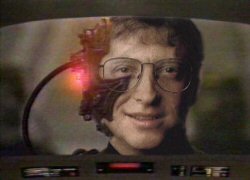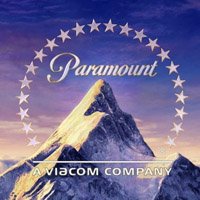Star Trek vs. Windows (Can One Franchise Predict the Success of Another?)
 This week, fellow geeks around the world mark the return to the Big Screen of one of Hollywood’s most enduring and venerable brands, Star Trek. Meanwhile, Microsoft is having a premiere of its own with the release of a trial version of its latest and greatest operating system, Windows 7.
This week, fellow geeks around the world mark the return to the Big Screen of one of Hollywood’s most enduring and venerable brands, Star Trek. Meanwhile, Microsoft is having a premiere of its own with the release of a trial version of its latest and greatest operating system, Windows 7.
Although remarkably different products, movies and computer operating systems share a common trait in that they have a disturbing tendency to become obsolete. In order to remain relevant, these products need occasional updates which can take years and cost millions, or even billions of dollars; and success is never guaranteed.
However, as different as movies and software are from one another, these two brands in particular seem to share a connection made in some previously unknown region of sub-space. Indeed, there may just be a mysterious correlation between of these two franchises that suggests that one my actually predict the success of the other.
“She’s coming apart at the Seams, Captain!”
If you’re a Star Trek fan then you’re surely aware that the luster on Paramount’s golden goose has been a bit tarnished lately. With the under-performance of both the last two television incarnations and the most recent pair of feature films, Star Trek’s warp drive is sputtering and it looks like the deflector shields can no longer sustain the thrashing of the critics, or the disinterest of the fans.
Similarly, Microsoft is hanging more than a bit of its future prospects on Windows 7. A sequel if there ever was one, “7” is supposed to return glory and incalculable wealth to a company still reeling from the thrashing it took after the lack luster and disappointing premier of Windows Vista, a product many reviled as essentially being all shine no substance.
 By now it should be obvious that just pumping out another version of the product doesn’t always solve the underlying problem; that, for whatever reason, something about the market has changed and what these brands really needs isn’t a mere remake or sequel, but (for lack of a better phrase), a reboot, a virtual reinvention of the entire product.
By now it should be obvious that just pumping out another version of the product doesn’t always solve the underlying problem; that, for whatever reason, something about the market has changed and what these brands really needs isn’t a mere remake or sequel, but (for lack of a better phrase), a reboot, a virtual reinvention of the entire product.
Curse of the Odd Number Star Trek Films
However, a Reboot is something easier said than done. While reinventing an established product is never easy, when you have brands of such import and value it’s not just the financial investment of the parent companies which is at stake, but the futures of both the brands and sometimes the parent companies themselves (if not, then at least a few executives).
And of course, as any self respecting Trek fan will tell you, only the even numbered films are any good; this latest incarnation is actually number eleven (and not to be outdone, this latest version of Windows is number “7”). All of which begs the questions; will either of these products be any good?
To Boldly Go where No Franchise has Gone Before

While the early buzz on both new releases seems very positive, both franchises are, in their own ways, testing uncharted waters and no one really knows what the end result will be; except for me. I have discovered a trend, which if correct, definitively predicts success for both products.
The charts below were produced following a rigorous scientific analysis worthy of Mister Spock (or Bill Gates). After a careful comparison of the two franchises, I have discovered that a successful performance of a Star Trek film or TV series always directly precedes the successful release of the next version of Windows (please note; any continuity errors are the result of an unexpected temporal anomaly).
As you will see, the prospects for both the Star Trek and Windows franchises are, for now, very favorable. However, only the future will be able to determine if they continue to live long, and prosper.
The Original Era

The Revival Era

The Reboot Era











